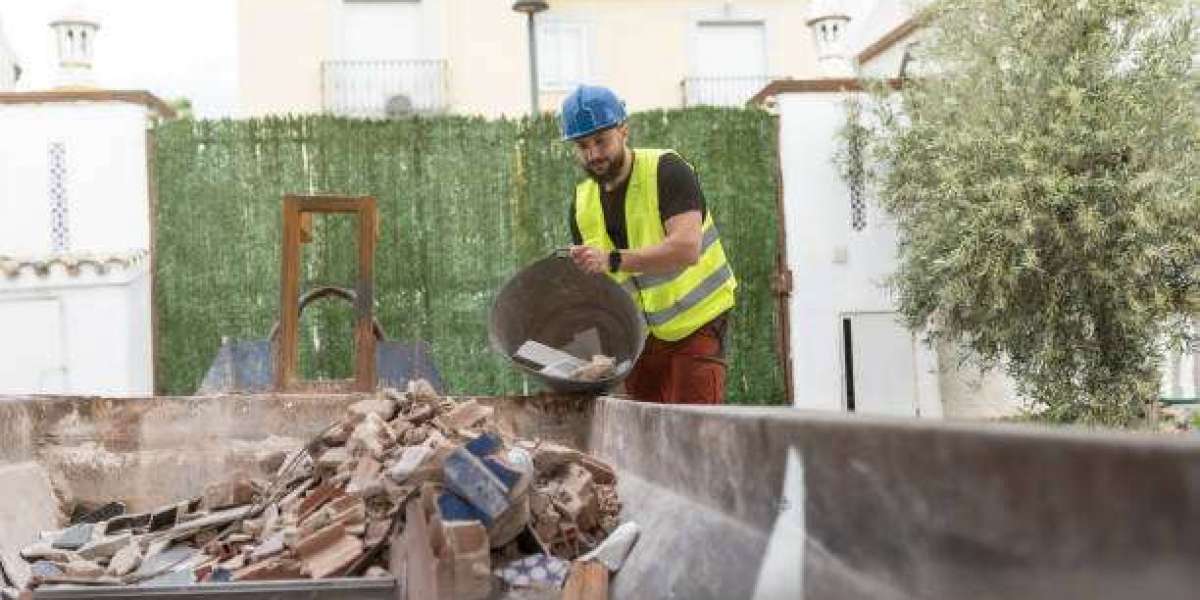Construction projects, whether large or small, leave behind significant amounts of debris. From scrap materials to dust, nails, and leftover construction tools, cleaning up after construction work can be a time-consuming and daunting task. Efficient cleanup not only helps in maintaining a safe and organized environment but also ensures that your site is ready for the next phase of work or handover. Streamlining the construction cleanup process can save you valuable time and money, and it’s important to adopt effective strategies for a smoother operation.
In this article, we will provide you with some expert tips on how to streamline your construction cleanup process, including utilizing construction debris removal services and other key considerations to improve efficiency and safety.
1. Plan the Cleanup From the Start
One of the most common mistakes on construction sites is leaving the cleanup process until the very end. When construction work is happening, it’s easy to focus on the build itself, but planning for cleanup from the start ensures that it’s more efficient when the time comes.
Include cleanup tasks in your overall project plan, and set clear expectations for when and how cleaning will be carried out at various stages of the project. For example, certain areas of the site may require cleaning at the end of each day to maintain safety and organization, while others may need a more intensive cleanup at the completion of specific project milestones.
2. Organize and Sort Debris As You Go
A common mistake on construction sites is accumulating piles of mixed debris over time. Instead of waiting until the end of the project to deal with all of the construction waste, organize and sort the debris as you go. This not only helps in making the final cleanup easier but also ensures that recyclable and hazardous materials are handled appropriately.
Set up designated areas or bins for different types of debris, such as wood, metal, drywall, and plastic. Have a team member responsible for sorting waste during the project to ensure that all materials are correctly placed in the right containers, reducing the effort needed for a final cleanup.
3. Prioritize Safety and Dust Control
Construction sites are prone to hazardous materials, sharp objects, and airborne dust, all of which can pose a risk to workers and the environment. Safety should always be a top priority when preparing for a construction cleanup. Equip workers with proper personal protective equipment (PPE), such as gloves, helmets, safety glasses, and dust masks. In some cases, you may also want to consider using hearing protection if power tools are used near the site.
Dust control is also a critical component of the cleanup process, especially during demolition or any work that creates airborne particles. Use dust barriers, air scrubbers, and wet cleaning methods to minimize the spread of dust throughout the site. This is essential for keeping the site safe and clean for both workers and anyone in the vicinity.
4. Implement a Daily Cleanup Routine
Construction sites can quickly become chaotic if debris and waste are left scattered throughout the day. To streamline the process, create a daily cleanup routine. Set aside time at the end of each workday to clear up debris, sweep floors, and organize tools and materials. This simple routine will help you maintain an organized site and prevent a major pileup of waste at the end of the project.
Daily cleaning can also reduce the risk of accidents by preventing trips, slips, and falls. Keeping walkways clear and surfaces tidy ensures that workers are not navigating through piles of waste while trying to complete their tasks.
5. Use Proper Waste Management Techniques
One of the most important elements of streamlining construction cleanup is understanding how to manage waste effectively. Construction waste can include a wide variety of materials such as concrete, metal, wood, drywall, and hazardous chemicals. Properly managing these materials is essential for both environmental and safety reasons.
Recycling: Many construction materials are recyclable, including metal, wood, and concrete. Set up a recycling system on-site to divert as much waste as possible from the landfill. Sorting these materials as you go will ensure they are disposed of correctly.
Hazardous Waste Disposal: Some materials, such as paints, solvents, and asbestos, require special handling and disposal. Make sure to set up proper containment and ensure that these materials are disposed of by licensed professionals.
Landfill Waste: For materials that cannot be recycled or safely disposed of elsewhere, ensure that you have proper containers on-site for non-recyclable waste. Work with a waste management company that can handle your construction debris removal needs efficiently.
6. Rent the Right Equipment for the Job
Sometimes, the best way to speed up the cleanup process is by utilizing the right equipment. Instead of relying solely on manual labor, renting equipment designed for construction cleanup can make the job much easier and more efficient.
Dumpsters: Renting a dumpster or several dumpsters in various sizes can keep debris organized and contained during the project. Make sure the dumpsters are easily accessible to workers so that cleanup can occur throughout the day.
Skid Steers and Excavators: For larger debris or heavy materials, renting a skid steer or excavator can help you move and load debris much more quickly than relying on manual labor alone.
Vacuum Systems: For fine dust, a heavy-duty industrial vacuum system can remove dust and debris from floors, walls, and surfaces efficiently.
7. Outsource to Professional Construction Debris Removal Services
When in doubt or when the project is large, it’s best to consider hiring professional construction debris removal services. These experts are trained in managing and removing construction debris quickly and efficiently, saving you both time and labor costs. Professional services have access to specialized equipment and personnel to handle the job with precision.
Construction debris removal services can also assist with hazardous material disposal, ensuring that everything is disposed of according to local regulations. Hiring these services means you won’t have to worry about sorting materials, renting dumpsters, or organizing the final cleanup phase yourself.
Moreover, experienced services can help expedite the process and ensure that everything is properly cleaned and cleared away by the project’s completion, leaving you with a safe, clean, and organized site.
8. Keep Communication Open with Your Team
Throughout the construction cleanup process, it's vital to maintain open communication with your team. Make sure everyone knows their responsibilities regarding debris management, cleaning, and safety protocols. Regularly check in with team members to address any challenges or areas of improvement in the cleanup process.
Setting up a communication system where team members can easily report issues or suggest improvements can lead to a smoother and faster cleanup process.
Conclusion
Cleaning up after a construction project doesn’t have to be an overwhelming or time-consuming process. By planning the cleanup from the start, organizing debris, prioritizing safety, and using the right tools, you can streamline the entire process. Additionally, utilizing professional construction debris removal services will not only save you time but also ensure that the cleanup is done correctly and efficiently. Following these strategies will help keep your construction site organized, safe, and ready for the next stage of your project.








